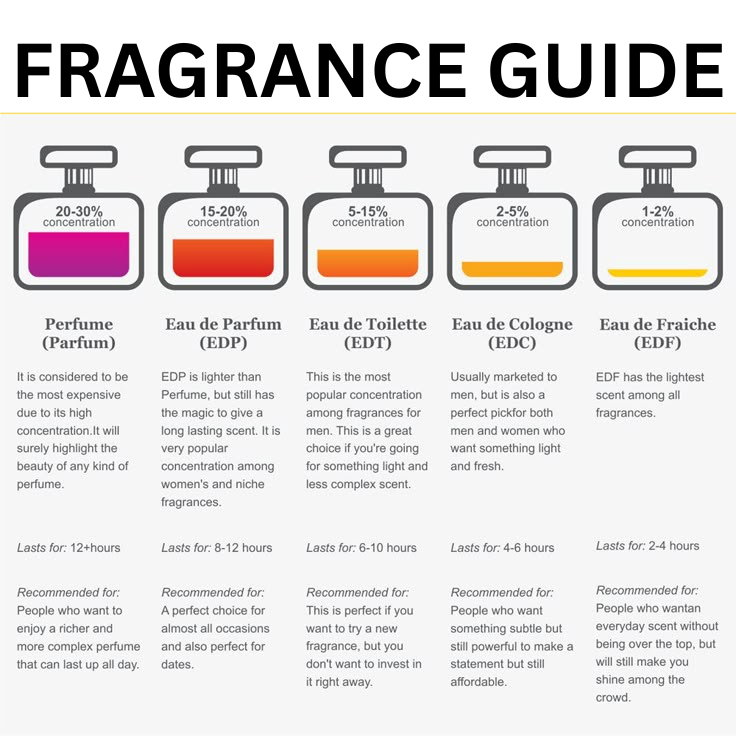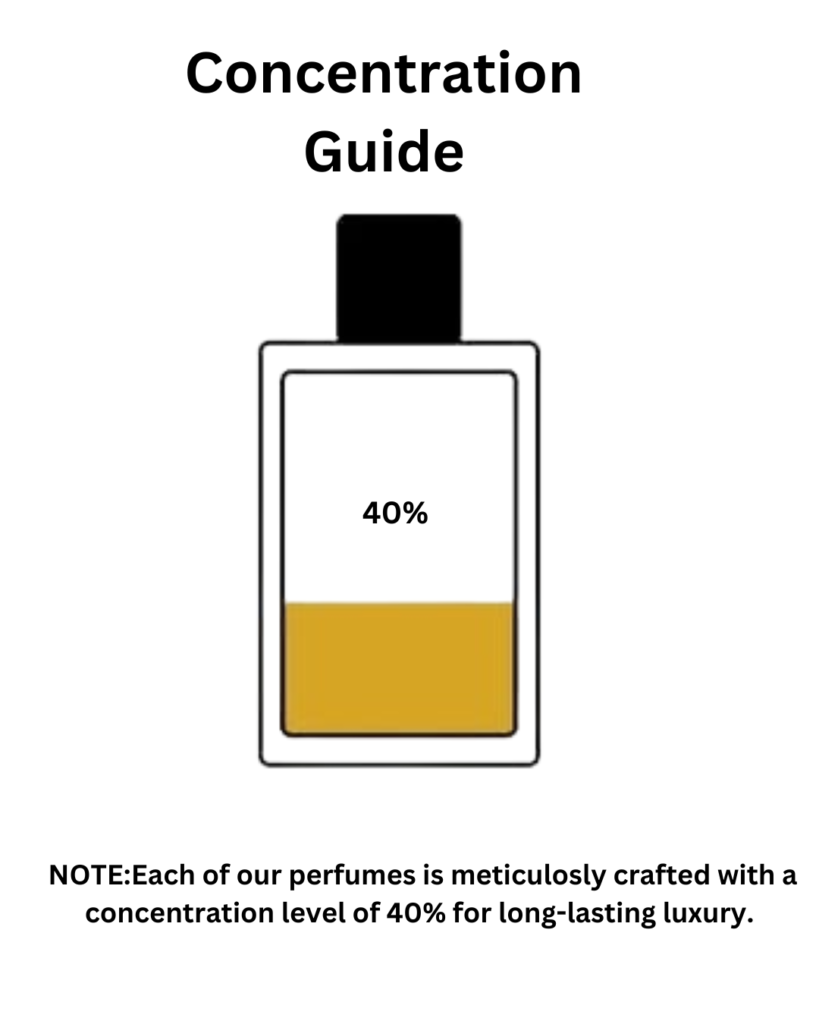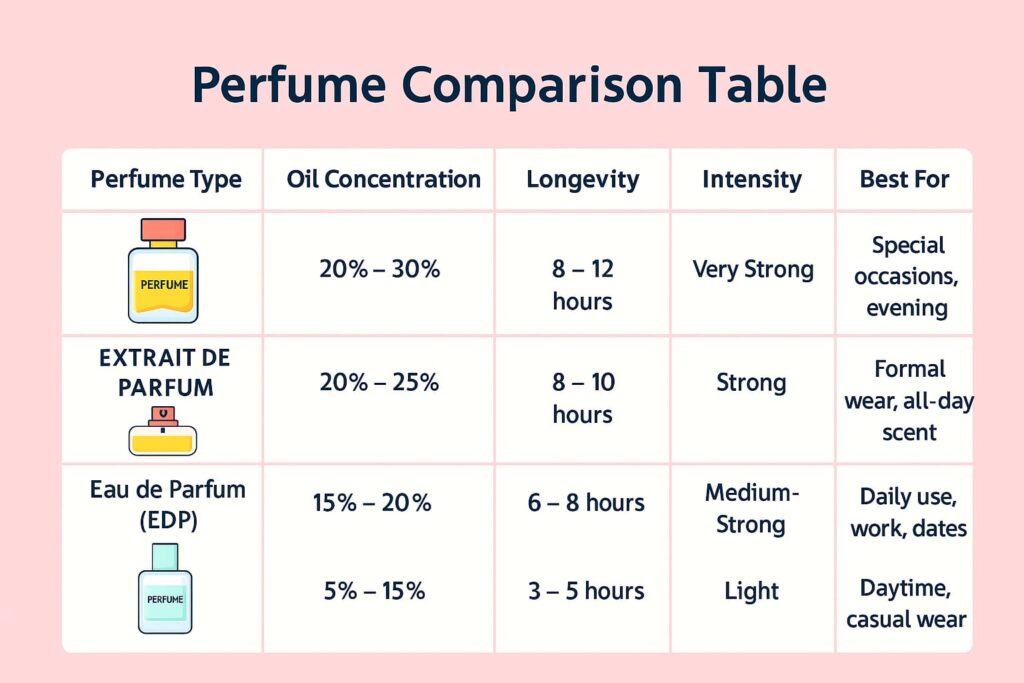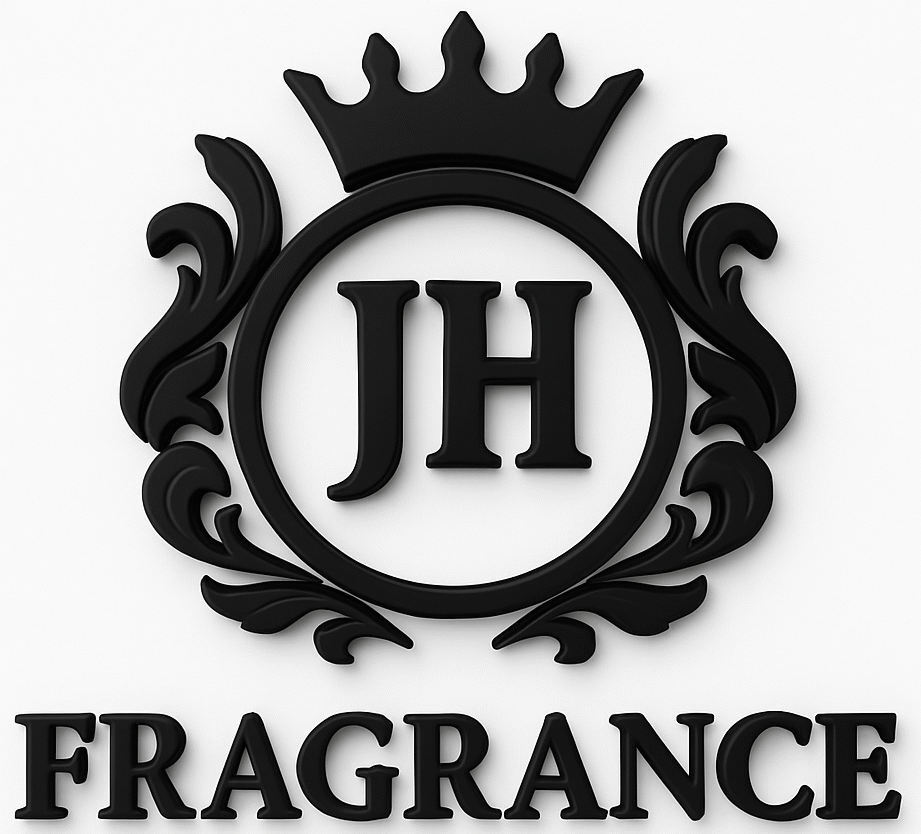Difference Between Eau de Parfum, Eau de Toilette, Extrait de Parfum, and Parfum: A Complete Guide
Description:
Confused between Eau de Parfum, Eau de Toilette, Extrait de Parfum, and Parfum? Discover the real difference with a comparison table and fragrance guide to help you choose the perfect scent.
Slug (URL):
difference-between-eau-de-parfum-eau-de-toilette-parfum
Tags:
Perfume Types, Eau de Parfum, Extrait de Parfum, Fragrance Strength, Perfume Comparison, Perfume Guide, Long-lasting Perfume
Introduction
When shopping for a new fragrance, you’ve likely seen labels like Eau de Parfum, Eau de Toilette, Parfum, and Extrait de Parfum. But what do they actually mean?
In this guide, we’ll explain the key differences between perfume concentrations, their lasting power, and how to choose the right one for you. This blog also includes a helpful comparison table to make things easy.
What Are Perfume Concentrations?
Perfume is made from a blend of essential oils, aromatics, and alcohol. The amount of aromatic oils determines the intensity and longevity of the scent.
Let’s dive into the 4 major types of perfume:
1. Parfum (Pure Perfume)
- Oil Concentration: 20% to 30%
- Longevity: 8 to 12 hours
- Best For: Evening wear, special occasions
Parfum (also called Extrait de Parfum or Pure Perfume) has the highest fragrance concentration. It is long-lasting, luxurious, and usually more expensive.
2. Extrait de Parfum
- Oil Concentration: 20% to 25%
- Longevity: 8 to 10 hours
- Best For: All-day wear, formal events
Very similar to Parfum, Extrait de Parfum is rich, intense, and suitable for people who prefer deep, long-lasting scents.
3. Eau de Parfum (EDP)
- Oil Concentration: 15% to 20%
- Longevity: 6 to 8 hours
- Best For: Daily use, office, date nights
Eau de Parfum is one of the most popular types. It balances strength and softness, making it perfect for everyday elegance.
4. Eau de Toilette (EDT)
- Oil Concentration: 5% to 15%
- Longevity: 3 to 5 hours
- Best For: Casual wear, summer days
Eau de Toilette is lighter and more refreshing. It’s ideal for warmer climates and people who prefer soft, breezy fragrances.
📊 Perfume Comparison Table
| Perfume Type | Oil Concentration | Longevity | Intensity | Best For |
|---|---|---|---|---|
| Parfum | 20% – 30% | 8 – 12 hours | Very Strong | Special occasions, evening |
| Extrait de Parfum | 20% – 25% | 8 – 10 hours | Strong | Formal wear, all-day scent |
| Eau de Parfum (EDP) | 15% – 20% | 6 – 8 hours | Medium-Strong | Daily use, work, dates |
| Eau de Toilette (EDT) | 5% – 15% | 3 – 5 hours | Light | Daytime, casual wear |

Which One Should You Choose?
- For Long-lasting Power: Choose Parfum or Extrait de Parfum
- For Daily Use: Go with Eau de Parfum
- For Light Refreshment: Try Eau de Toilette
Always consider your skin type, climate, and personal style when selecting a fragrance.
Final Thoughts
Now that you know the difference between Eau de Parfum, Eau de Toilette, Parfum, and Extrait de Parfum, you can shop smarter and pick a scent that truly matches your lifestyle.
Whether you want something long-lasting, subtle, or luxurious, understanding perfume concentration is the first step to finding your signature scent.
Conclusion
Understanding the difference between EDT, EDP, and Extrait de Parfum helps you buy a fragrance that suits your style and lasts just the way you want.
At JH Fragrance, we offer a wide range of long-lasting perfumes with high concentrations—crafted to give you the best scent experience possible.

✨ Pro Tip: Always try a perfume on your skin before buying. The same scent can smell different on each person due to body chemistry.
JH Fragrance:
All our fragrances are crafted with a high concentration of 40%, ensuring exceptional longevity and a rich, lasting scent experience.”
We use 40% fragrance concentration in all our perfumes for long-lasting luxury.”









Thankx for the guidance